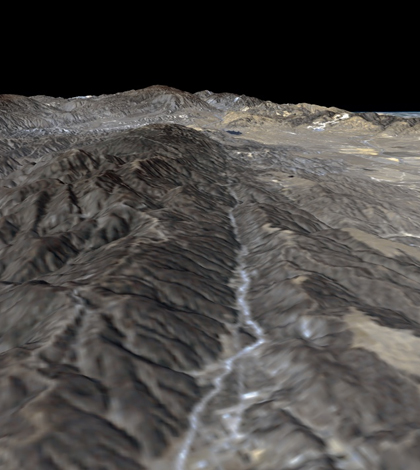Earthquakes Powered By Tiny Crystals

A computer model of the San Andreas Fault in California. (Credit: NASA/JPL/NIMA)
A new study shows that earthquakes get their power from an unlikely source, according to a recent Live Science article. University of California researchers say a lubricant consisting of extremely tiny crystals is responsible for causing earthquakes. The crystals are a result of heated rock and intense pressure. The lubricant makes it easier for rock slabs to move, triggering earthquakes.
The research team used computer simulations and discovered that shallow earthquakes, less than 18 miles deep, operate similarly to earthquakes ranging from 180 to 430 miles deep.
To understand shallow earthquake activity, the team examined rock from the Punch Bowl, the San Andreas Fault’s ancestor.
Samples from the rock also showed traces of the nanocrystals. Similarly, the scientists found that elements comparable to those found in subduction areas also become nanocrystal lubricants with extreme pressure. Initially, fluid was thought to cause the rocks’ movement in deep earthquakes, but nanocrystals show this is not the case.
Top image: A computer model of the San Andreas Fault in California. (Credit: NASA/JPL/NIMA)




0 comments